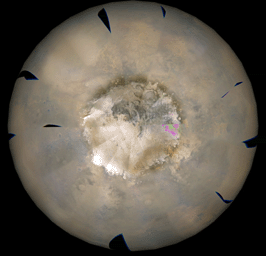
Conditions on Mars today do not support the stability of liquid water on its surface. However, it is possible that water could be trapped deep within the subsurface. In 2018, scientists reported the discovery of a subglacial lake roughly 1 kilometer below the south pole of Mars in the region known as Ultimi Scopuli. This discovery was reported based on 29 radar observations collected over three years using the Mars Advanced Radar for Subsurface and Ionosphere Sounding (MARSIS) instrument on the European Space Agency’s Mars Express spacecraft. While this was an exciting result, it was also met with skepticism due to the low number of observations over a short period of time. In a recent study led by Sebastian Emanuel Lauro from the Università degli studi Roma Tre (Roma Tre University), including team members from the previous publication, new radar data was collected with MARSIS from Ultimi Scopuli. The new data includes 134 observations over seven years of the region surrounding the suspected subglacial lake. The characteristics of the radar returns, which translate to the reflectivity, smoothness, and possible wet/dry transitions within the target material, along with the inferred dielectric constant, have been interpreted in some areas as reflections from subsurface layers of liquid water. The study not only observed the same feature thought to be a subglacial lake about 20 by 30 kilometers in area, but also several additional possible patches of subglacial liquid water surrounding it. For these purported lakes to be thermally stable and not solidified, they must be incredibly salty and super-cooled, or subject to anomalous geothermal flux. Although there is still debate surrounding the interpretations of this study, the additional data provide motivation for further examination of the subsurface properties of Mars’ south polar region and a continuing discussion of its paleoclimate history. READ MORE